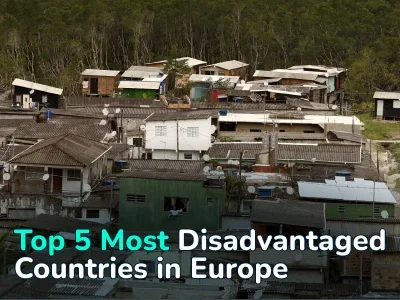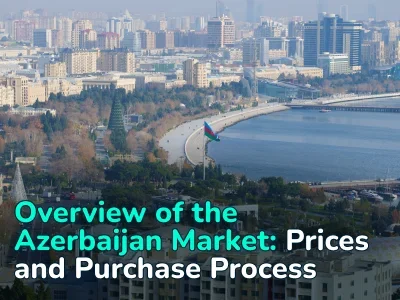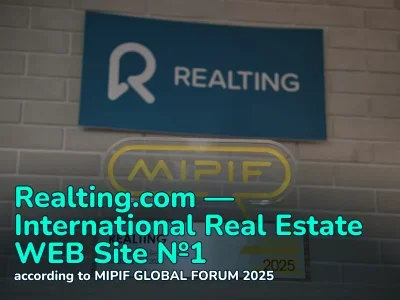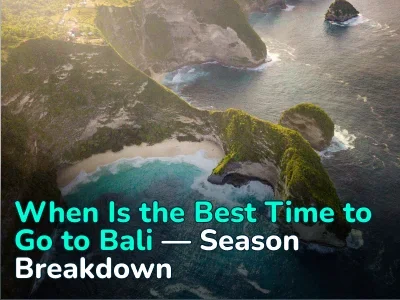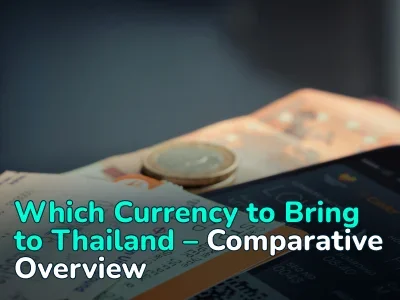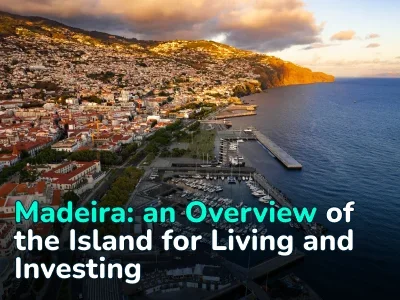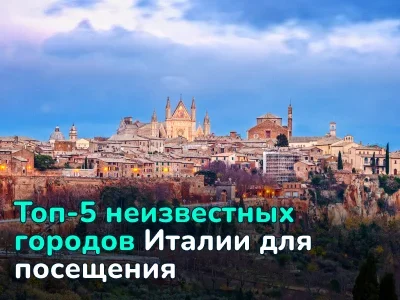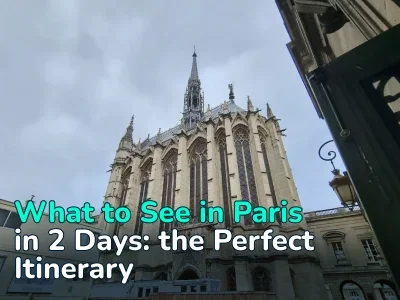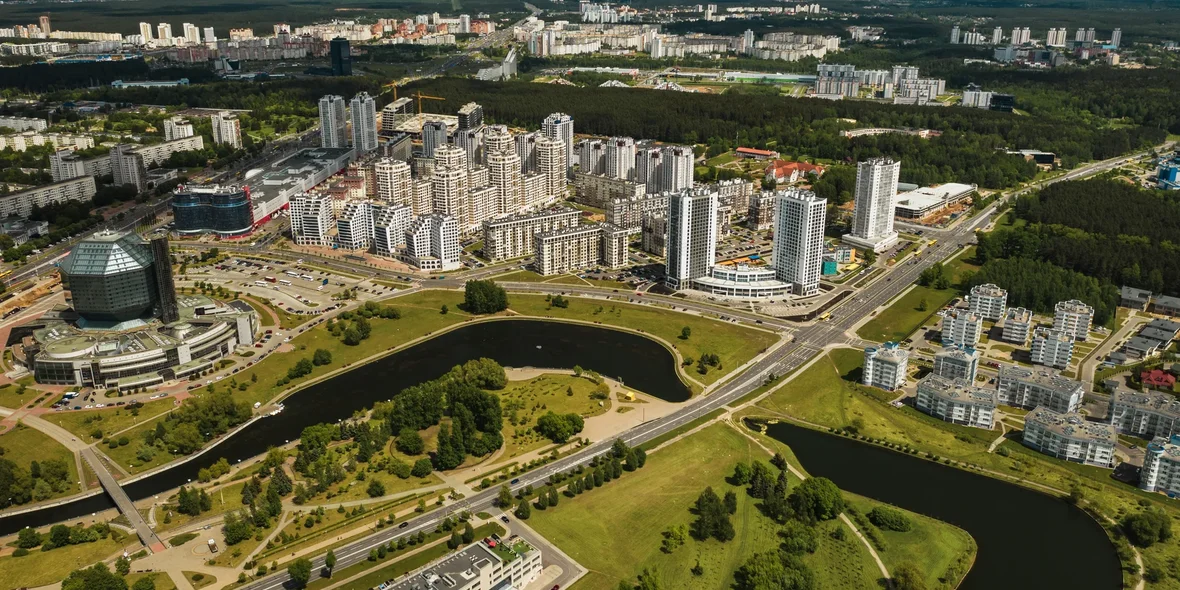
What to See in Minsk in 2 Days: a Rich and Interesting Route
In recent years, the question of where to go has often arisen, and it is not always possible to give a clear answer to this. Of course, there are capitals and large cities of European countries. But one of the pearls and hidden treasures is Minsk — the capital and heart of the Republic of Belarus.
We have prepared a guide to Minsk, in which we will offer you our version of a personal two-day trip to the most striking places of the capital of Belarus.
Getting to Know Minsk
Let’s start with the pressing question of when is the best time to visit Minsk. The ideal period for exploring it is the second half of spring and the beginning of summer. Although the weather is capricious in spring, at this time the trees in parks such as Loschitzky or Gorky are in full bloom, and the temperature stays within +10–20 °C. In early May, Labor Day and Victory Day are celebrated with great fanfare.
In summer, the temperature is +20–25 °C, but on some days it reaches +28–30 °C. At this time, the Svisloch embankment comes alive, and summer cafés open. The main official holiday of summer is Independence Day of the Republic of Belarus (July 3), and the unofficial holiday is Ivan Kupala (June 21).
Autumn is less popular, since in its second half the weather becomes typical for countries in the temperate zone, with slush and variable precipitation. Of note, the Minsk International Film Festival “Listapad” takes place in October. Food fairs are also held every weekend.
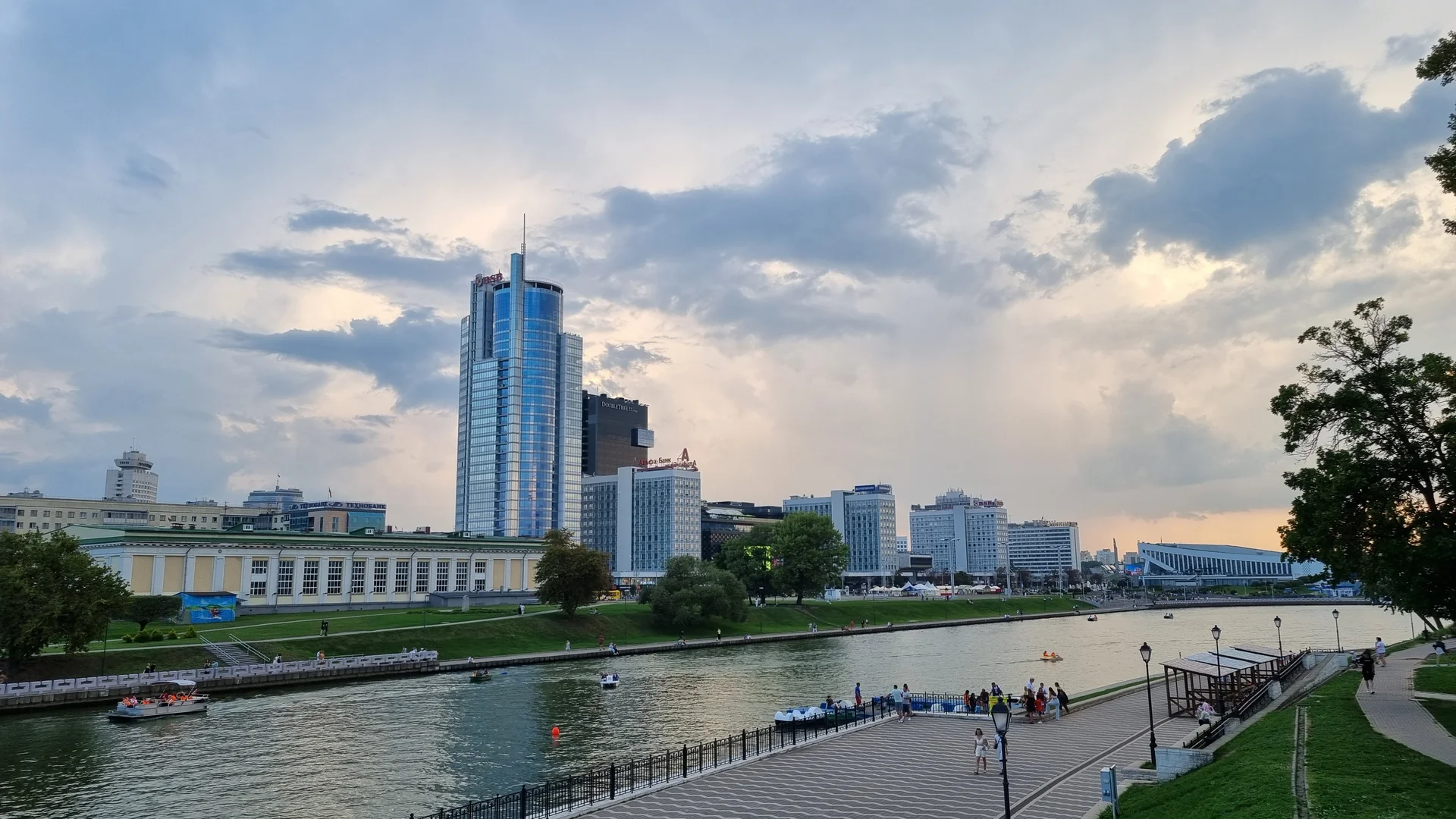
Regardless of the weather and time of year, it is convenient to move around Minsk using public transport. Trolleybuses and buses run frequently, and the metro covers most of the city. But if you want to get to know the capital yourself, you can always rent a scooter or a bicycle, fortunately, the city has many special paths for them, especially in the central part.
There are also enough hotels in the capital of Belarus; the most popular among tourists are “Belarus,” “Orbita,” and “Minsk.” There are options further from the center but with more affordable prices: for example, the hotels “Sputnik,” “Tourist,” and “Express” (near the railway station).
The local currency is the Belarusian ruble, but you do not need to have a lot of cash with you, since there are terminals for payment cards almost everywhere.
Transportation in Minsk
All of the following places in Minsk can be easily reached by public transportation. It is well developed in the capital of Belarus and consists of an extensive system of buses and trolleybuses; blue, red, and green subway lines, as well as streetcar lines stretching through the central parts of the city. A ride costs about 0.9-1 BYN ($0.3). Transportation works from 5:30 to 00:30, after this time, public transportation is practically not running, and it is better to take a cab.
For independent familiarization with the city, you can rent bicycles and electric scooters through the applications Kolobike or Eleven. This is facilitated by a large number of bicycle lanes, especially in the central part and along the Svisloch embankment. Cost from 5 BYN/hour ($1.53) for a bicycle and from 0.3 BYN/minute ($0.1) for a scooter.
For navigation, it is best to use the app “Transport BY” (iOS, Android) or “Yandex Maps” — they are much more accurate than Google Maps and allow you to see the current schedule and route of transportation. Also, on Google Maps, you can come across long-closed cafés or unmarked points of interest and locations in Minsk.
The most common aggregators of cab rides in Minsk are Yandex Taxi, Stolitsa cab 135, A1 cab, and cab 152. A trip around the center is 10-25 BYN ($3.05-$7.64). Ordering through the app is more profitable than catching a cab on the street.
Therefore, we advise all tourists to:
- Install “Yandex Maps” (there is an interface in Polish and English) to find routes and stops.
- Buy tickets for public transport (it is better to get a pass for all types of transport). This can be done at the station ticket offices. Cashiers often speak Russian, and less often English. The “Minsktrans” kiosks at bus stops or near the subway are also suitable. Most terminals accept Visa/Mastercard, but you should keep Belarusian rubles with you just in case.
- Install Yandex Go or Eleven, and link a card for payment.
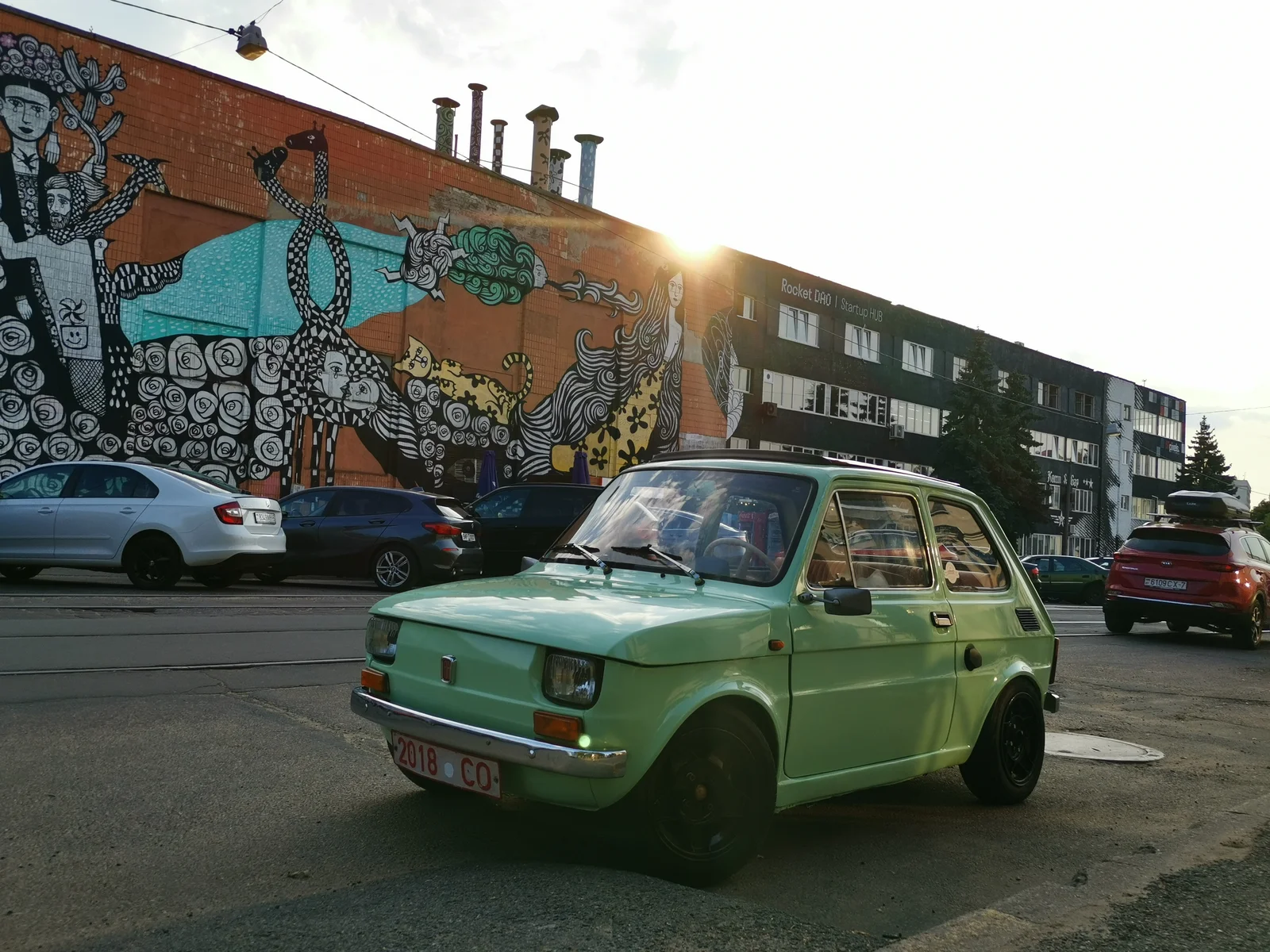
The First Day in Minsk
You can start immersing yourself in the history, architecture, and atmosphere of the old city from the historical quarter near the railway station, Independence Square, and then move to the Upper Town, Trinity Suburb, and go out to the Svisloch embankment. It is unlikely that the Minsk-Passazhirsky railway station itself will surprise you, but the houses opposite it might. Two tall towers, called the “Gates of Minsk”, immediately catch your eye. In fact, these are ordinary corner residential buildings, on top of which there is a superstructure decorated with statues in the style of socialist realism. The architecture of the nearby historical buildings is Soviet classicism and Stalinist Empire style.
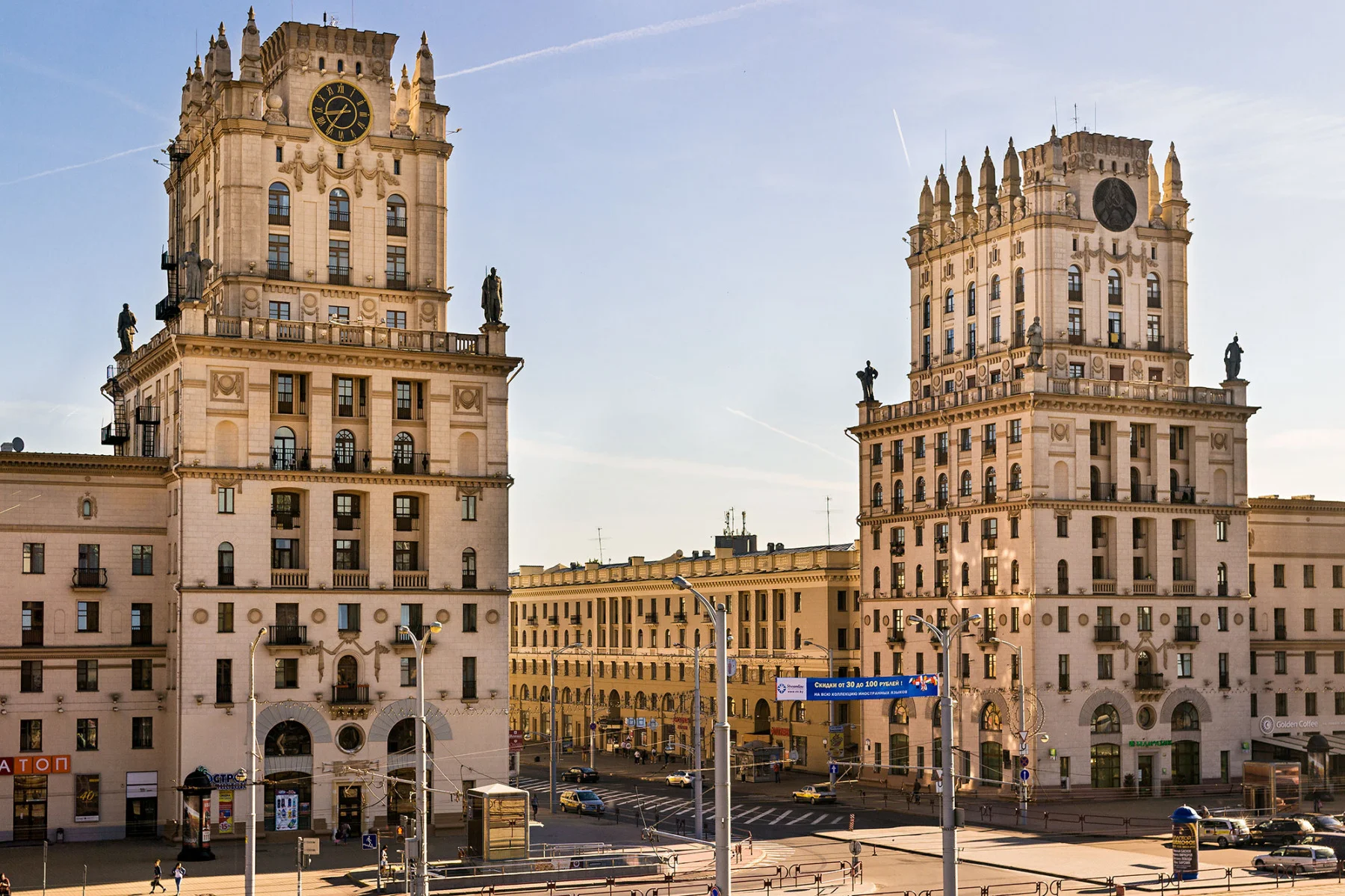
Photo source: ru.belarus.travel
Further up Kirov Street, the Kozina House catches your eye, which now houses the Court of the Eurasian Economic Union. In front of it is Mikhailovsky Square, and the building itself is made in an eclectic style and contrasts with the surrounding houses. Just a few steps away is Independence Square, where the Red Church (Catholic Church of Saints Simeon and Helena) stands — a symbol of the city, built of red brick. Inside, there are beautiful stained glass windows and an organ, but at the moment, it is closed due to repair and restoration work.
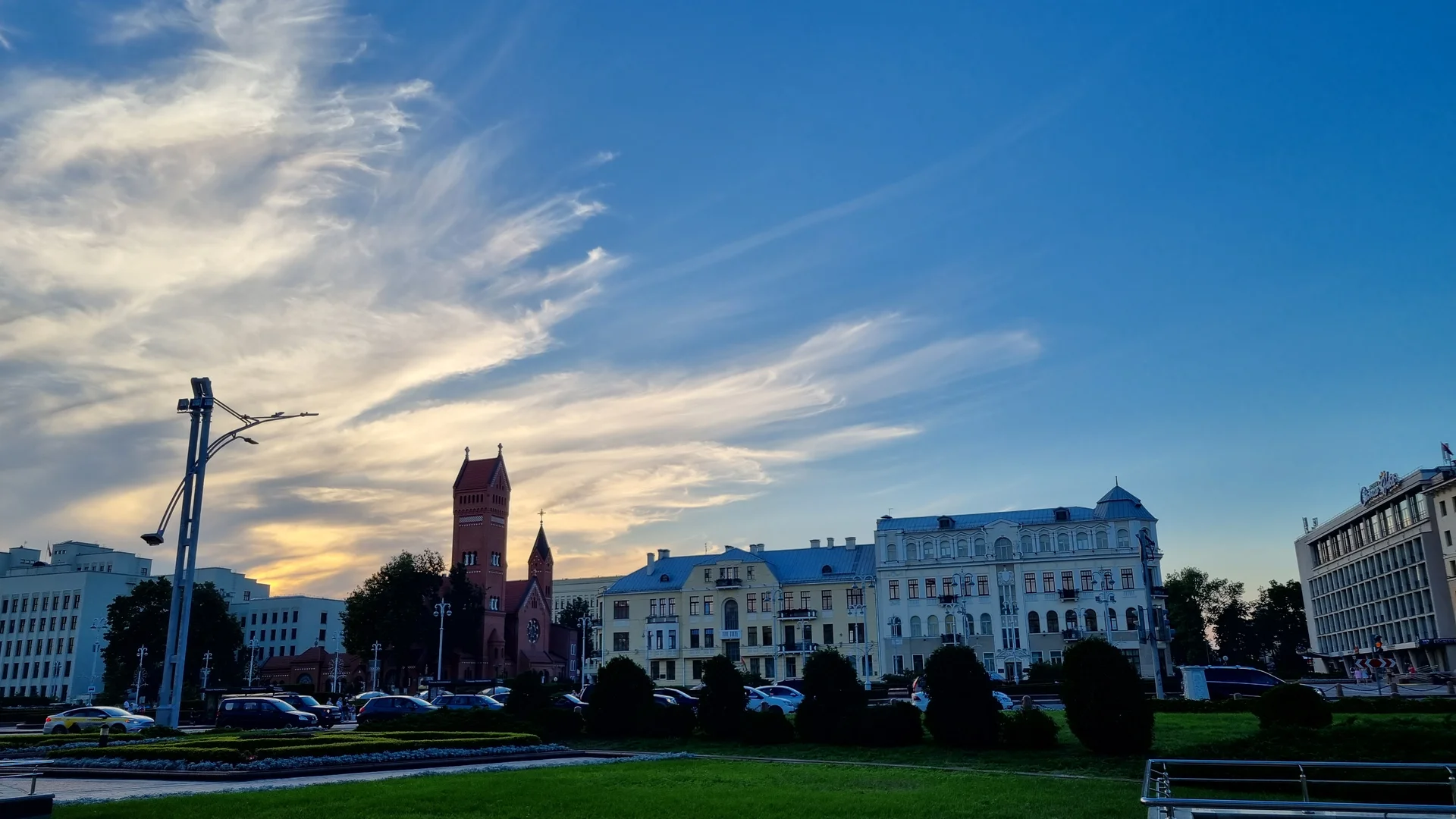
The Stolitsa shopping center is also located here. It is located underground, and to get there, you need to go through the passage. This is where you can get acquainted with the products of Belarusian brands of various types, from sweets and cheeses to textiles and household appliances.
Then our path will pass along Nezavisimosti Avenue, and the first building we will see is the Main Post Office. It is made in the style of Stalinist monumental classicism and is decorated with bas-reliefs, which are crowned with the coat of arms of the Soviet Union. The Main Post Office is open to visitors and is definitely worth going inside, as the high central operating hall really makes an impression.
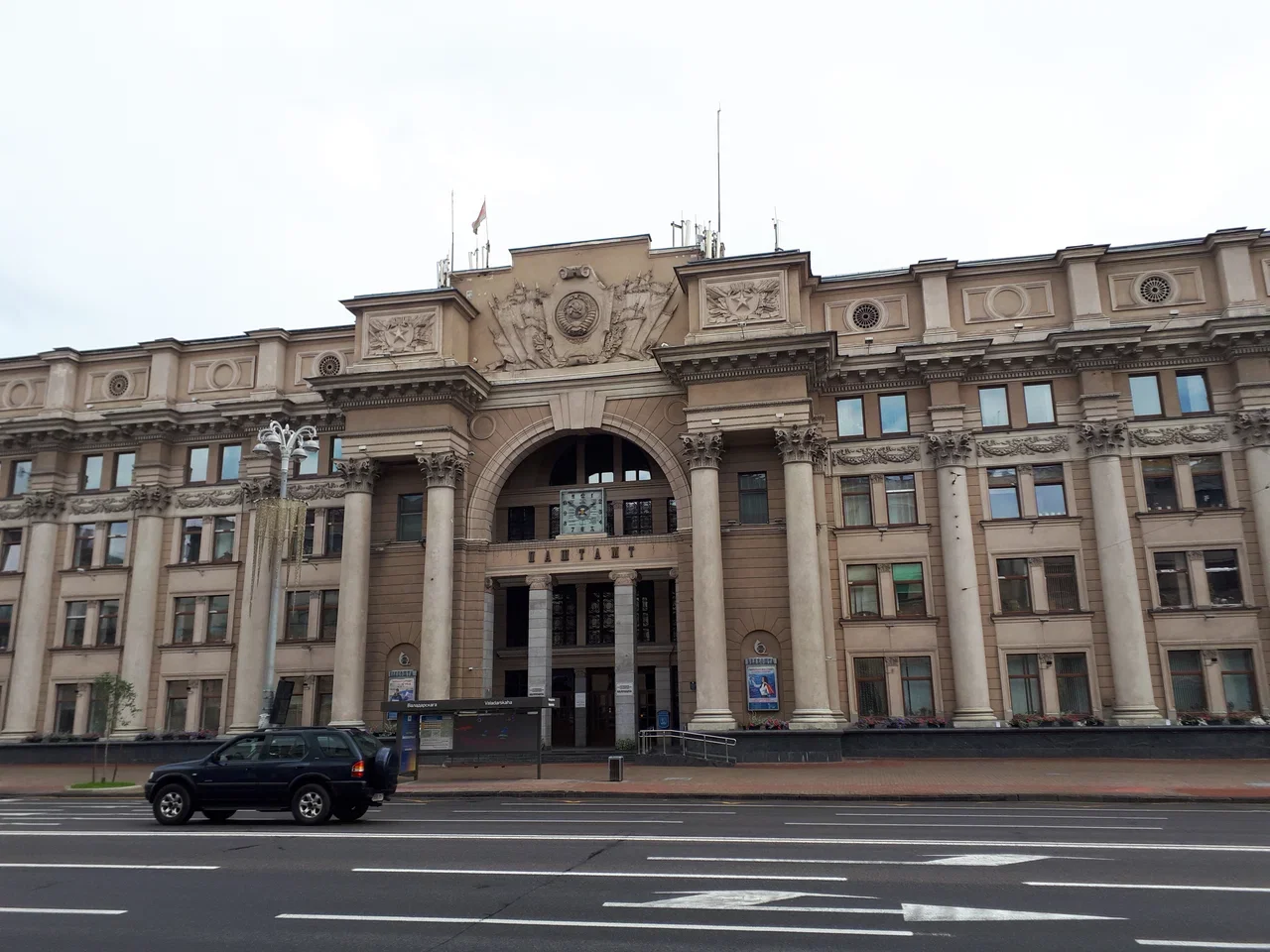
At the end of the avenue, we will find the Upper Town, a historical center with cobbled streets, galleries, and cafés. Here are the Cathedral of the Descent of the Holy Spirit (a Baroque Orthodox church), the Cathedral of the Blessed Virgin Mary (a Catholic church with a minimalist interior), and a snow-white 18th-century building — the Minsk Town Hall. The latter, by the way, has an observation deck, and various exhibitions are held in the building itself.
Once you reach Maksima Bogdanovicha Street, you can cross the Svisloch and find yourself in the Trinity Suburb. This is an entire block that has retained its appearance from the 17th—18th centuries. Below is the Svisloch embankment and the Island of Tears — a memorial to internationalist soldiers.
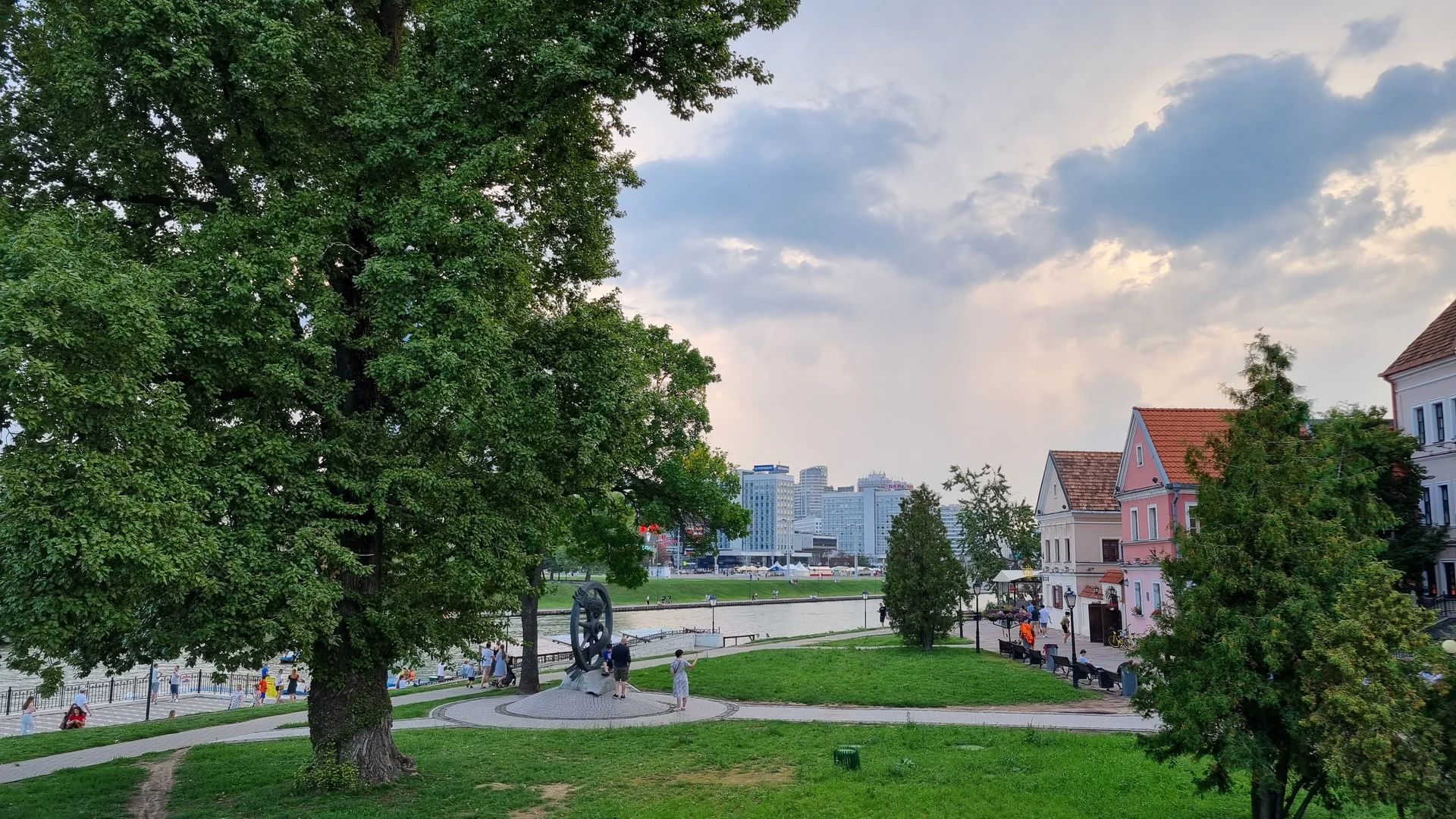
Walking along the embankment higher, along Storozhevskaya Street, you will see the Starostinskaya Sloboda square and the Belarus Hotel building towering over other houses. By the way, there is a restaurant at its top, which offers a beautiful view of Minsk. If you still have some strength left, you can go from the square to Pobediteley Avenue, right to the Museum of the Great Patriotic War. You definitely won’t miss it, as there is an obelisk “Minsk — Hero City” in front of it. Inside, there is a rich exhibition of weapons and equipment from that period, as well as thematic halls dedicated to the Byelorussian SSR during the war and during the German occupation.

At the foot of the museum is Victory Park, which is part of the water-green diameter of Minsk — a system of parks and green squares along the Svisloch. In the park, you can look at Bird Island. It is so called because it is a protected area with ducks, swans, and herons.
The fountains “Victory” and “Sail” are the main decorations of the park. Both fountains are most beautiful when the lighting is turned on in the evening. In general, the embankment along Komsomolskoye Lake is an ideal place for walks, during which you can stumble upon the sculpture “Farewell,” dedicated to the soldiers who went to the front.
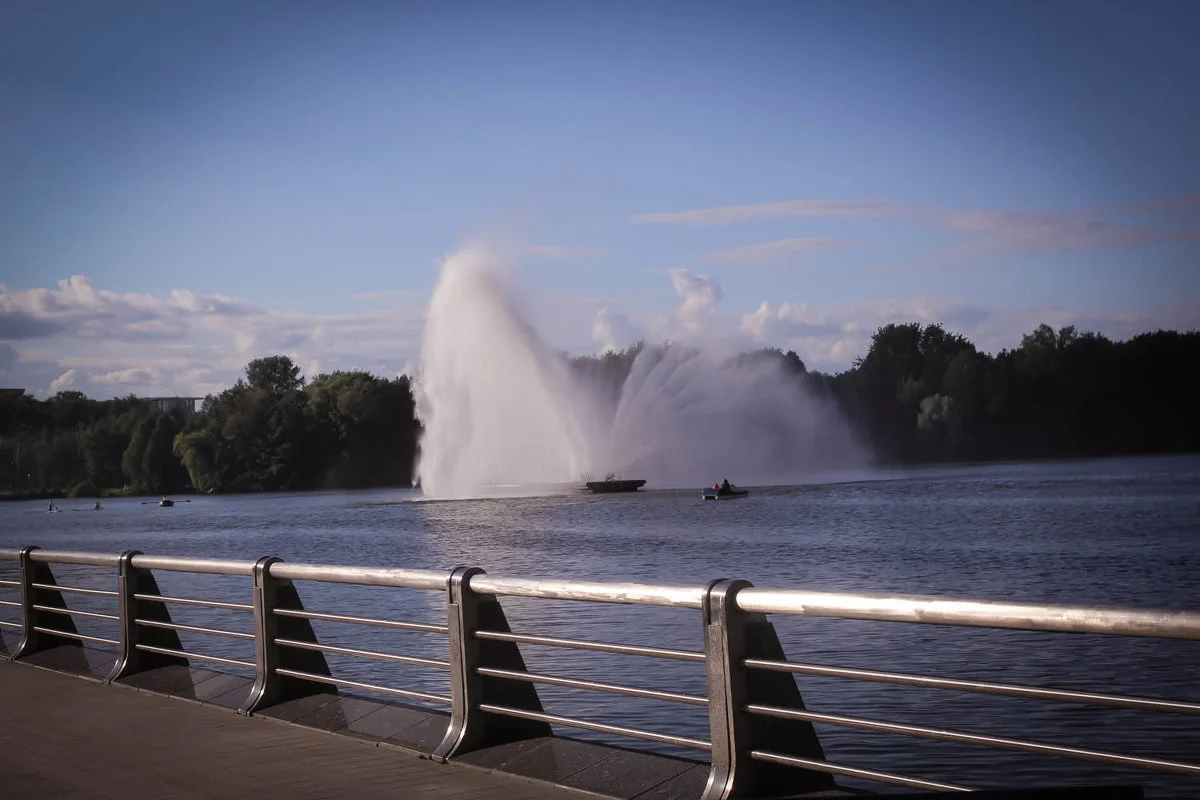
Photo source: fotokto.ru
The Second Day in Minsk
After a busy first day, the second day in Minsk will reveal the city from new sides: from futuristic architecture to green parks, iconic factories, and modern museums. We will start with the icon of modern Minsk — the National Library, go down Independence Avenue, look into the parks, and finish the day at the National Art Museum. Near the Vostok metro station, there is our starting point — the National Library. It stands out for its unusual design in the shape of a rhombicuboctahedron, and from its observation deck, you can see the nearby Writers Park and the modern residential complex Mayak Minsk. The library looks like a spaceship, especially at night, when the multi-colored lighting is turned on. Inside there are huge reading rooms, exhibitions, and even a book museum, where you can see rare editions. Don’t forget to stop by the café on the first floor and treat yourself to coffee or local cakes.
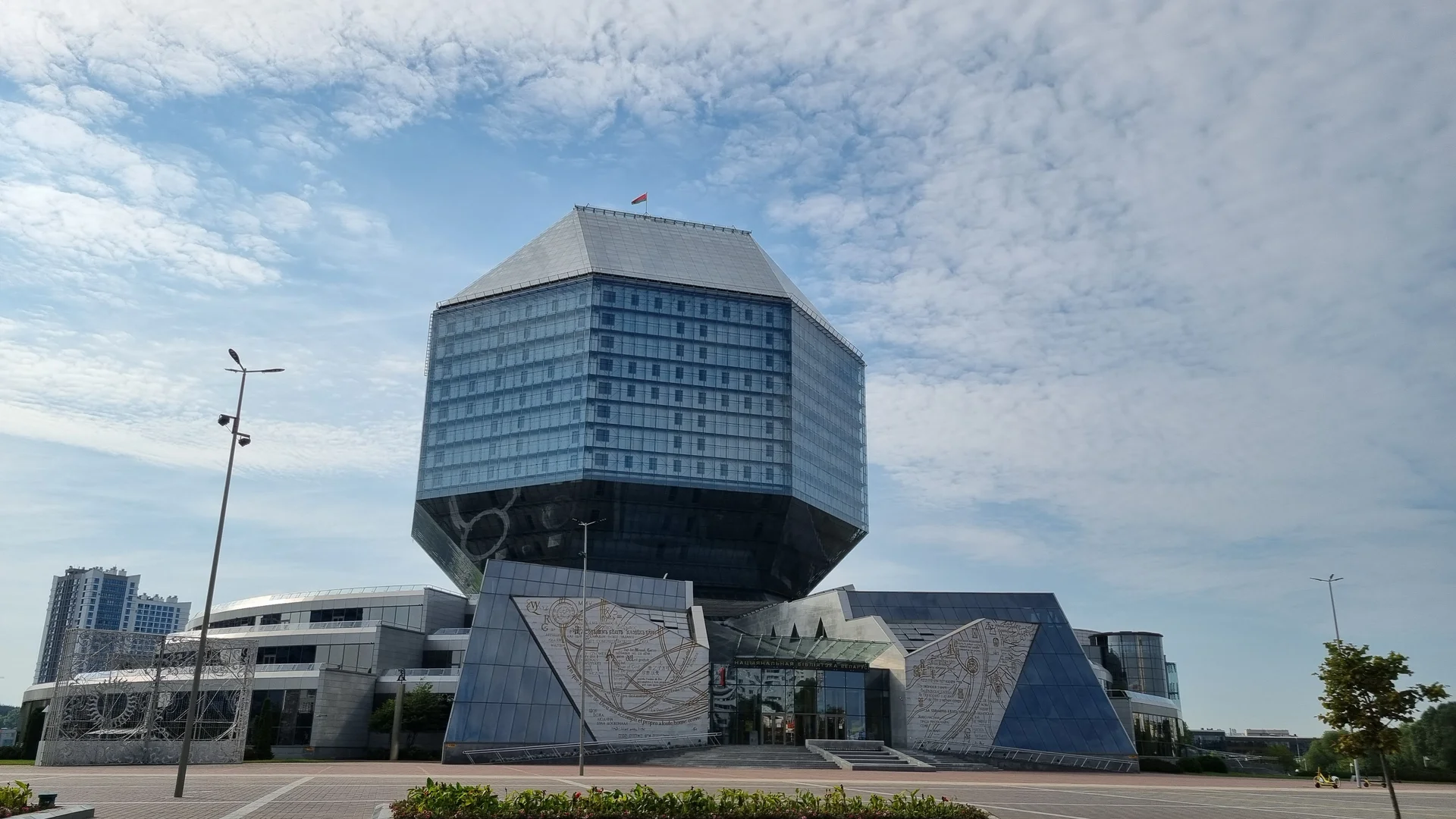
Then we walk along Independence Avenue towards the city center. After passing the Moskovskaya metro station, we come to Chelyuskintsev Park. From a distance it looks like a solid forest, but between the tall pines there is everything for relaxation: shady alleys, rides, a pond with ducks, and even a small amphitheater where concerts are held in the summer. For children — carousels and trampolines; for adults, benches by the water and street cafés. And right next to it is a huge botanical garden, which has gardens of lilacs, magnolias, conifers, and many other interesting plants.
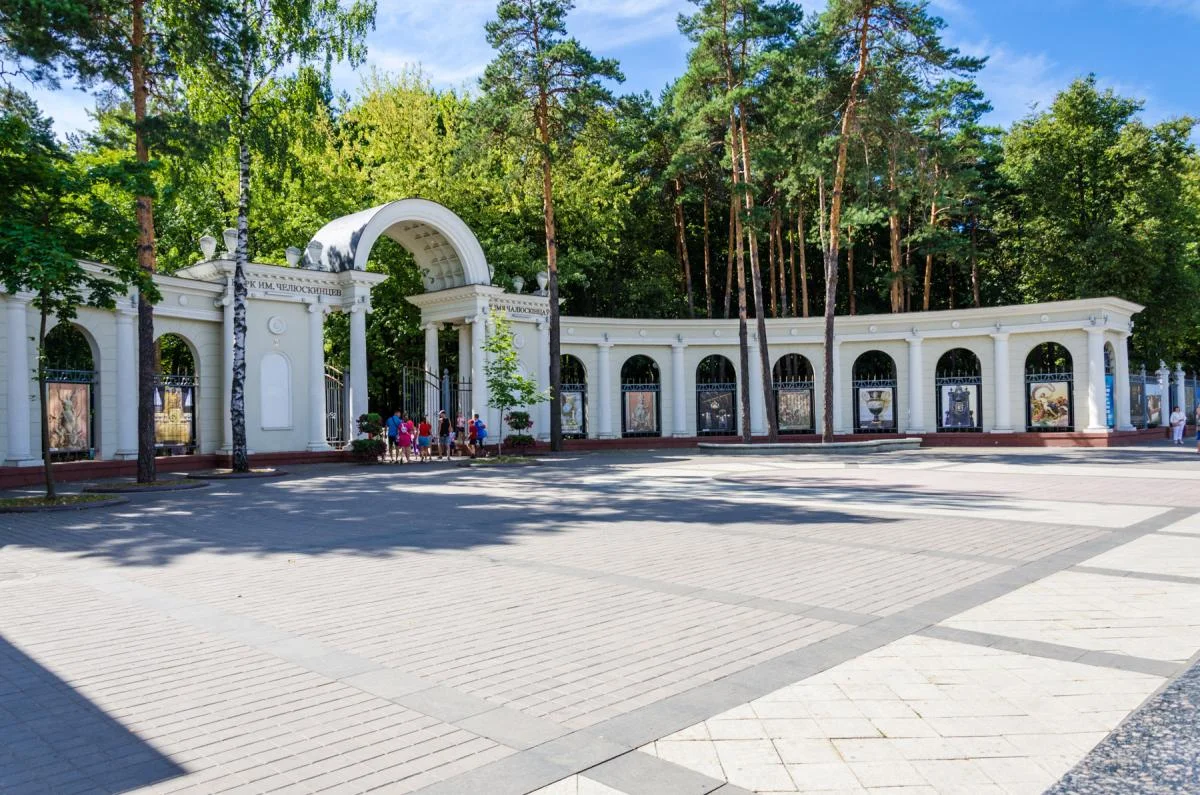
Photo source: roomer.by
Right opposite Chelyuskintsev Park is the famous Luch factory. It has been producing watches since 1953. The factory building is a typical example of Soviet industrial architecture with laconic lines and functional design. But the main goal is the Luch brand store, where you can buy iconic watches with a minimalist, modern, traditional design. There you can also visit the Belarusian Watchmaking Museum, but it is better to sign up for a tour in advance.
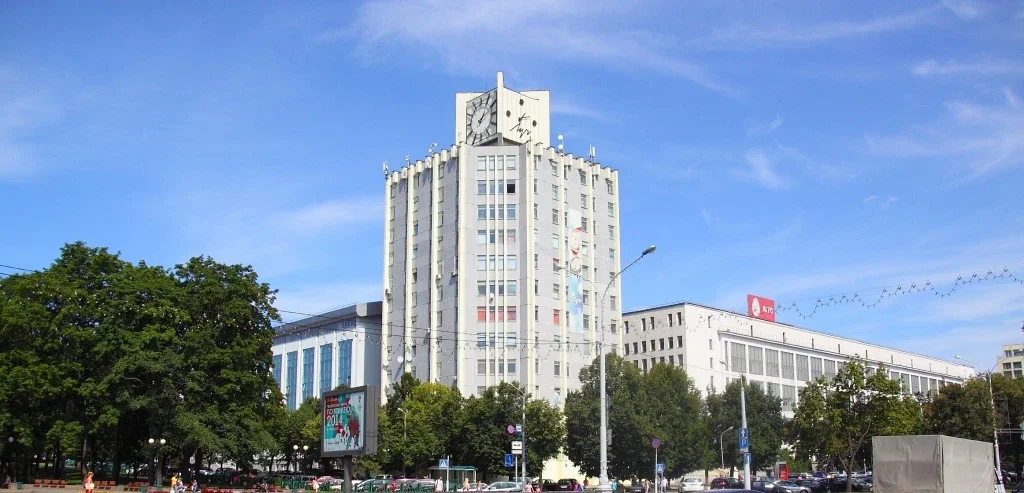
Photo source: luch.by
Continuing along Independence Avenue, we come to Yakub Kolas Square, named after the great Belarusian poet. There is a monument dedicated to him, and next to it is the building of the Belarusian State Philharmonic in the Stalinist Empire style.
We move on to Victory Square. On it stands a symbol recognizable even beyond the borders of the republic — the Victory Monument. This is a 38-meter obelisk from 1954, crowned with the Order of Victory and dedicated to the heroes of the Great Patriotic War. Under the obelisk burns the Eternal Flame, and it itself is decorated with bas-reliefs symbolizing different branches of the armed forces. The surrounding buildings are examples of Stalinist Empire style: the Officers’ House with massive columns and residential buildings with stucco, known as “Houses on Victory Square.”
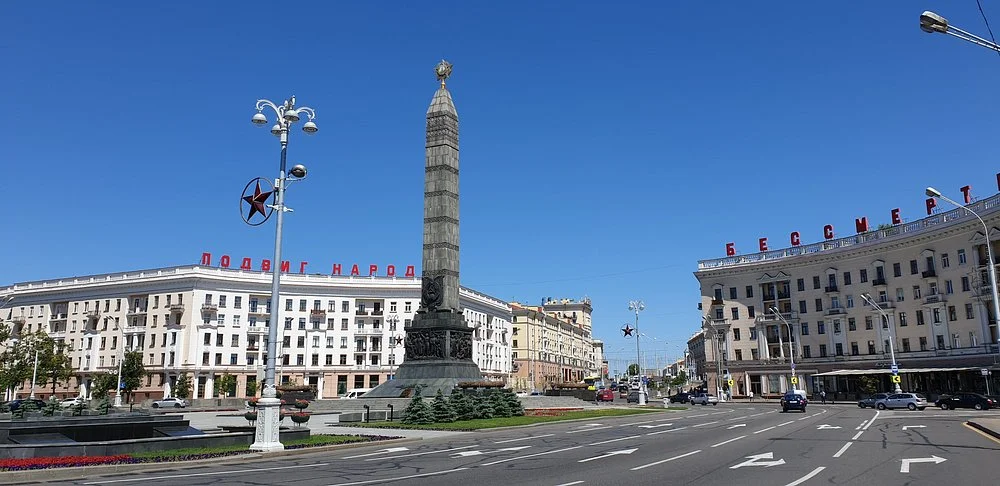
Photo source: tripadvisor.ru
A few steps from Victory Square is Gorky Park. This is the oldest park in Minsk, founded in 1805. The park has a Ferris wheel, rides, a planetarium, and cozy alleys with small ponds. Festivals are held here in the summer, and a skating rink opens in the winter. Cafés and kiosks with ice cream and coffee are located right in the park.
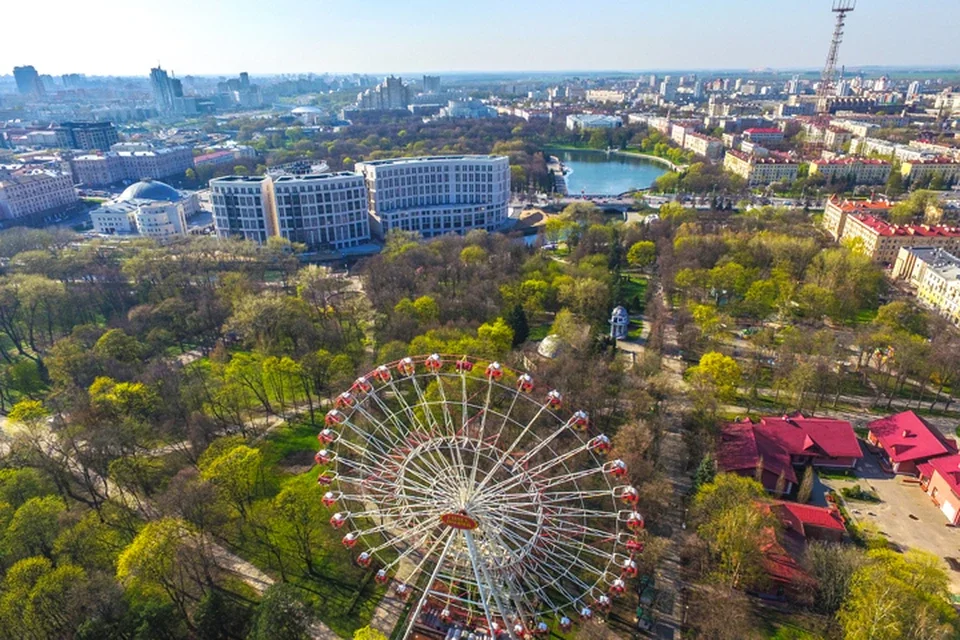
Photo source: kp.ru
After crossing the Svisloch by bridge, we approach the building of the Belarusian State Circus. It is a round building in the style of Soviet modernism with a bright dome. The circus is in operation; the poster includes acrobatics, clowning, and a show with animals. Even if you do not go to the show, the facade and the square around the circus are worth a look.
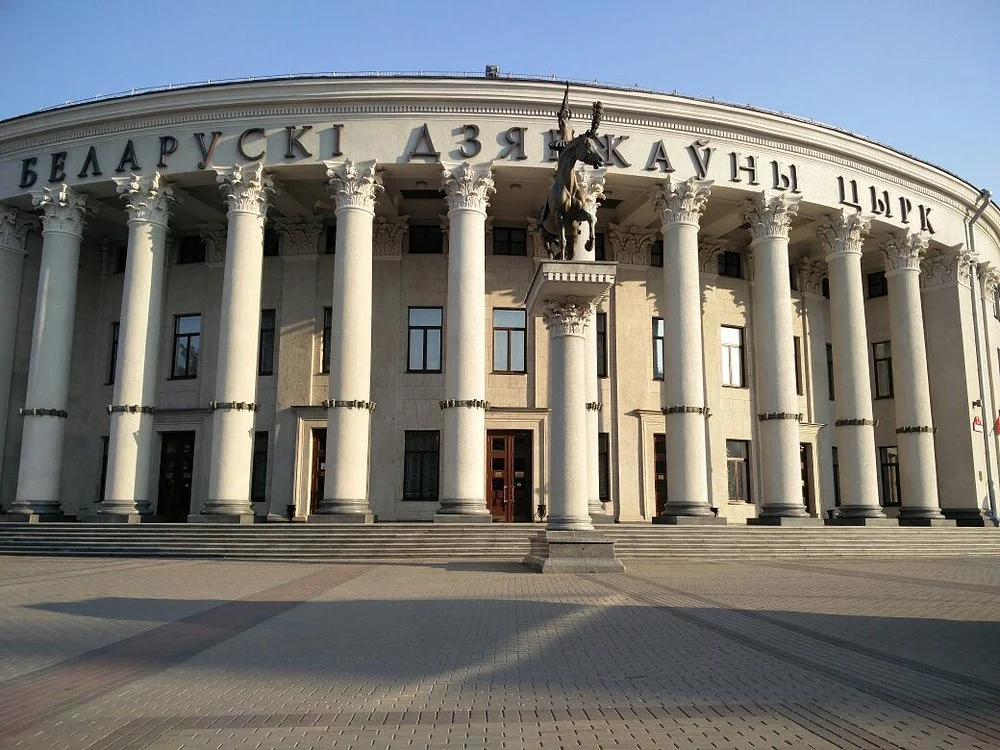
Photo source: tripadvisor.ru
Opposite the circus is the park of another famous Belarusian writer — Yanka Kupala. Here you can find a couple of interesting objects, and we are not only talking about the monument to the classic himself but also about the Vyanok fountain, the Kupalsky Bereg embankment, and the Yanka Kupala Museum.
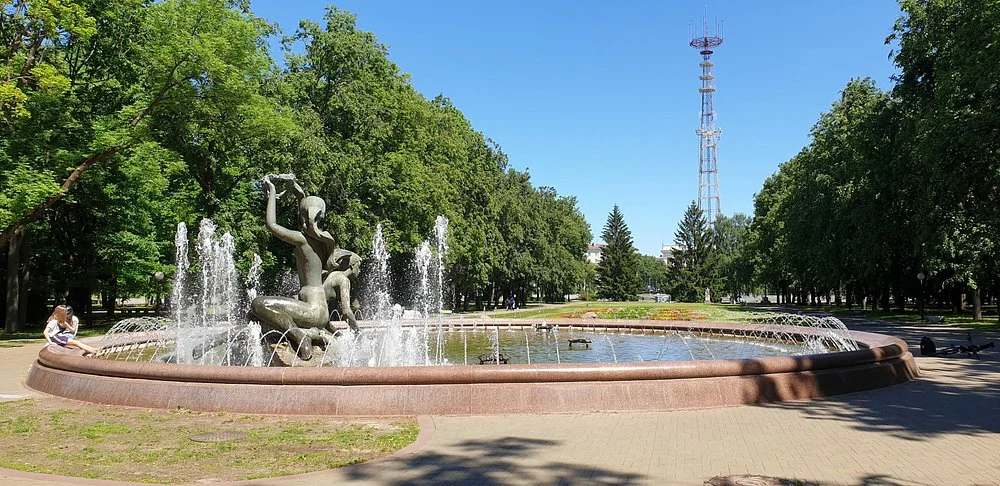
Photo source: tripadvisor.ru
A little further and we are at Oktyabrskaya Square. Here stands the Palace of the Republic, a massive building in the style of late Soviet modernism, where concerts and exhibitions are held. Next to it is the Palace of Culture of Trade Unions with massive columns in the style of Stalin’s Empire style, and opposite is Aleksandrovsky Square, a small cozy park with a fountain called “Boy with a Swan.” The square comes alive during city holidays, such as Independence Day, when fairs and themed events are held here.
We finish the day at the National Art Museum, which is located on Lenina Street, 20, a 5-minute walk from the Museum of Statehood. This is the main art treasure trove of Belarus. It contains works from 16th-century icons to paintings by Marc Chagall and Chaim Soutine. The museum building itself is a monument of classicism, and inside there are spacious halls with paintings, sculptures, and decorative art. The museum’s surroundings are a park and elegant houses of the 19th—20th centuries.
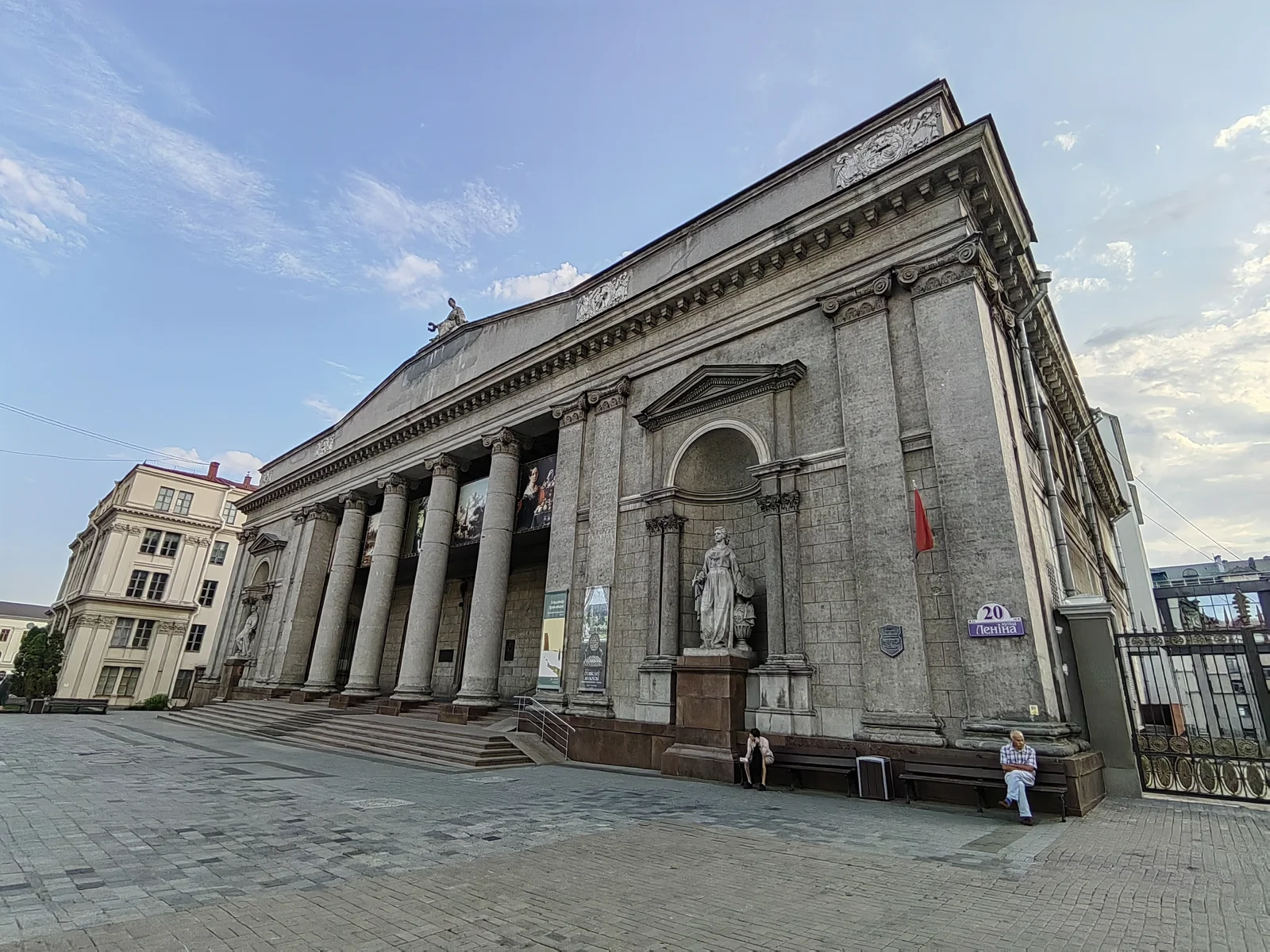
And Some More of Minsk
If two days in Minsk have already shown a lot, there are locations that, although not included in the main routes, definitely deserve your attention. And the main one is the historical and cultural complex “Stalin Line”. It is located 20 km from Minsk, near the village of Loshany (highway P28 Minsk-Molodechno).
The complex recreates part of the Minsk fortified area of the 1930s with dugouts, trenches, machine-gun pillboxes, and artillery semi-caponier No. 134. Here you can see a collection of military equipment from the Second World War — tanks, guns, armored vehicles — and even shoot from historical weapons (but not for free). The complex is interactive: in the summer, they conduct battle reconstructions, and in the winter, military-patriotic festivals. Nearby is the Minsk Sea (Zaslavskoe Reservoir), where you can take a walk or have a picnic.
It is easier to get there by car or with an excursion, but there are also buses from the “Central” bus station. The inspection will take 2–3 hours, and during memorable events, such as Victory Day, the whole day.
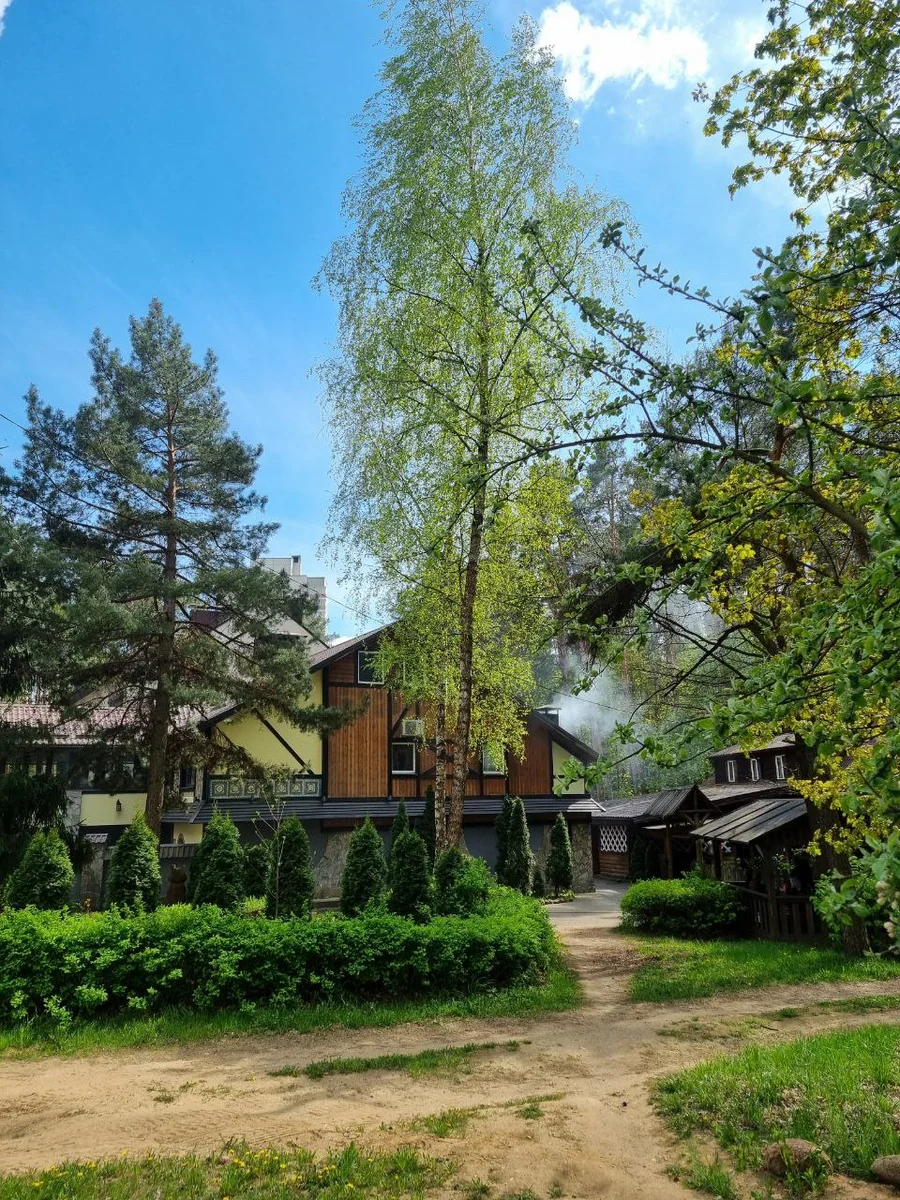
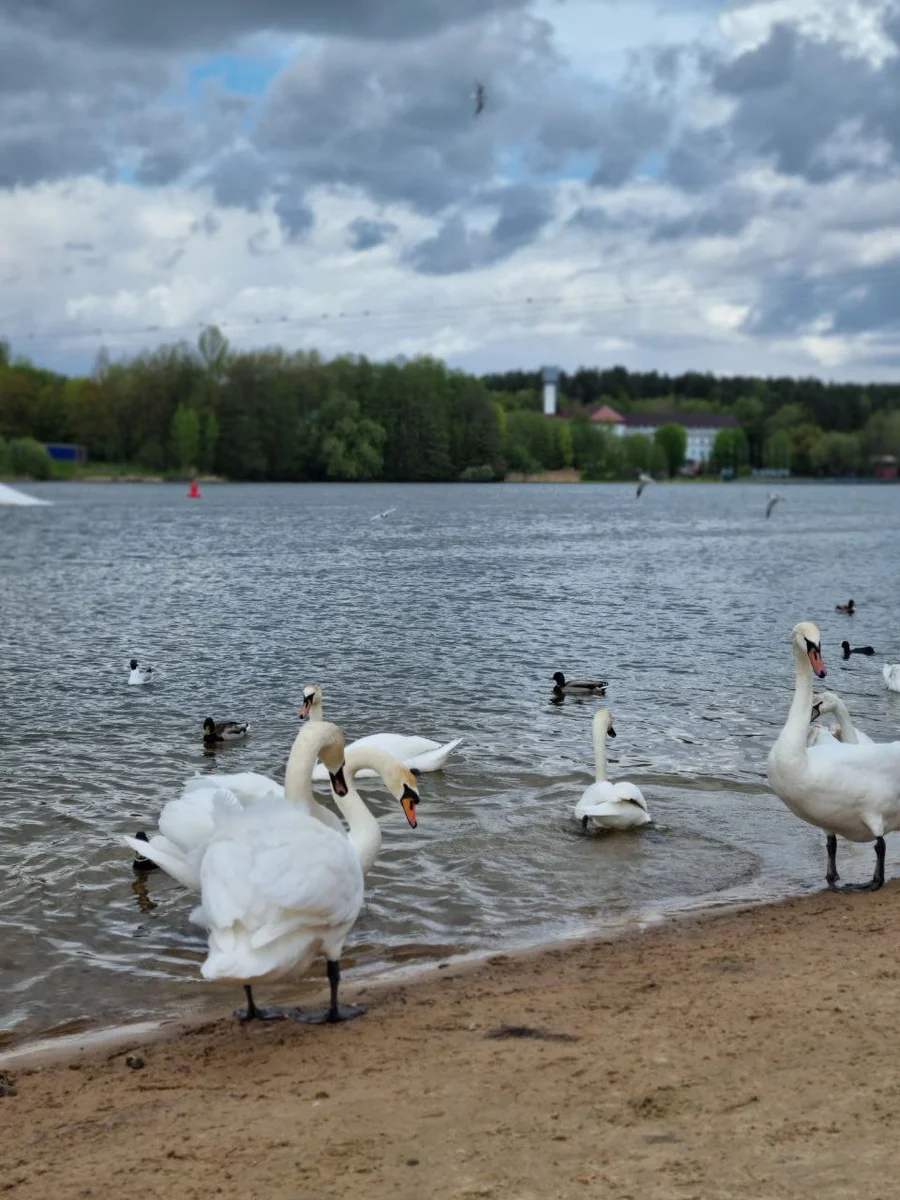
54 km from Minsk, along the M3 highway, is the Khatyn Memorial Complex, dedicated to the tragedy of the village burned in 1943. It tells the story of hundreds of Belarusian villages destroyed during the Great Patriotic War. The complex includes memorial plaques with the names of 186 villages, the “Village Cemetery”, the sculpture “Unconquered Man”, and the Eternal Flame. It is better to get there with a tour or by car, as public transport is infrequent.
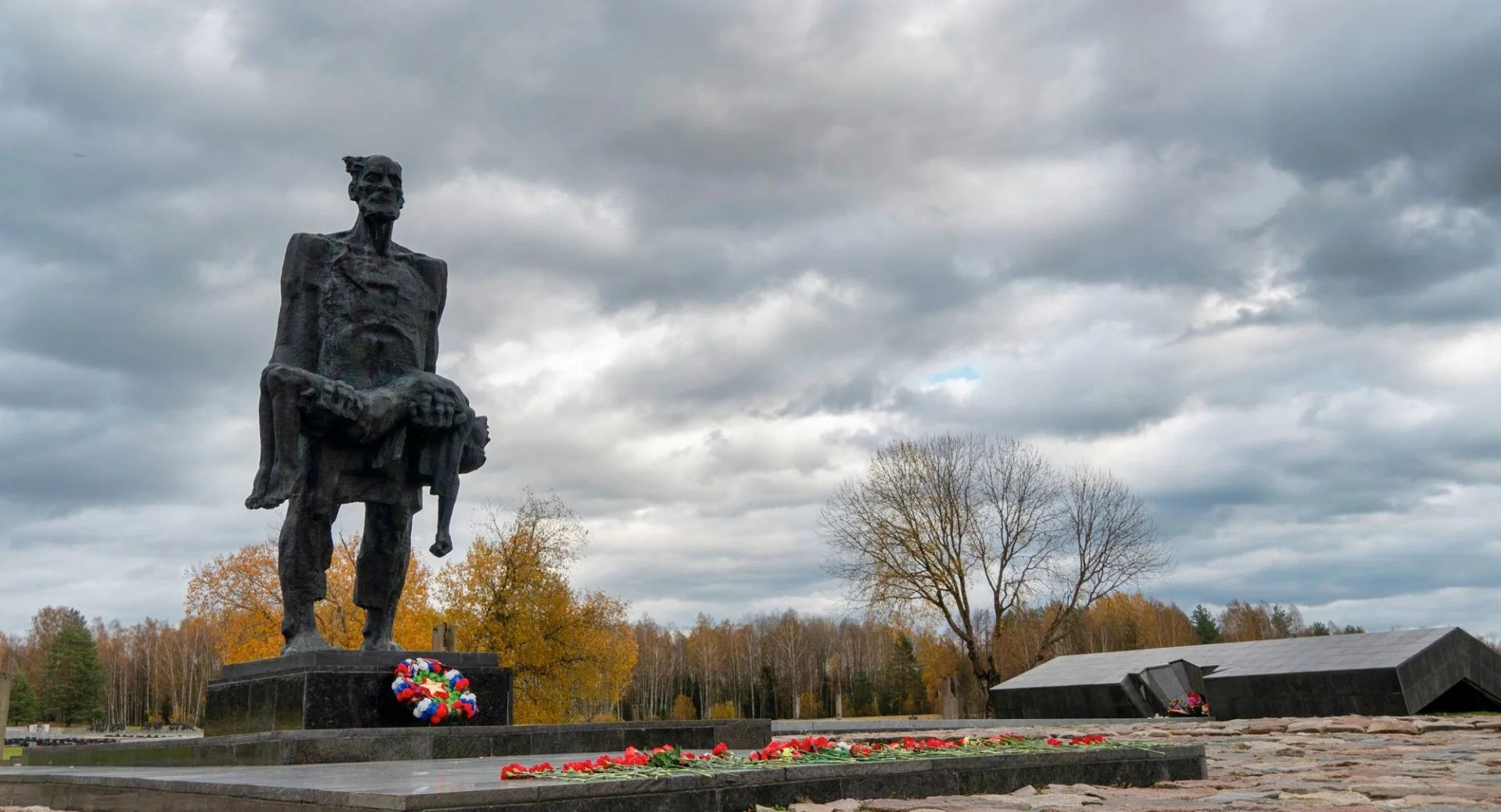
Photo source: travelagency.by
30 km from Minsk, in the agro-town of Dukora, there is the “Dukora Manor” — an ethnographic complex that takes you into the atmosphere of noble Belarus of the 18th-19th centuries. Here, a manor with wooden buildings, a forge, a pottery workshop, and even a mini-zoo has been restored. You can try your hand at crafts, ride horses or taste noble cuisine in a tavern. The complex is interactive: they hold master classes in weaving, ceramics, and even medieval dancing. This is a great place for a family vacation or to get acquainted with Belarusian culture.
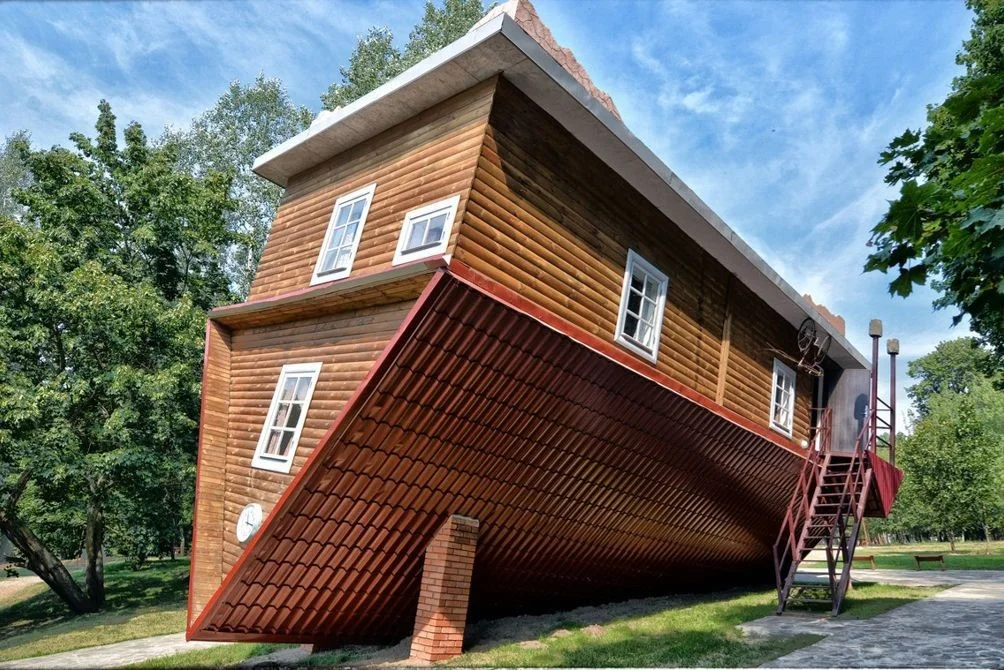
Photo source: dukora.by
Just 5 km from Minsk, in the agro-town of Ozertso, there is an open-air ethnographic museum, which contains monuments of wooden architecture from the 17th to 20th centuries. These are authentic huts, barns, a church, and a windmill, transported from different parts of Belarus. Here you can learn how Belarusian peasants lived, try traditional dishes (for example, pancakes with honey.) and buy handmade souvenirs. A visit will take 1.5–2 hours.
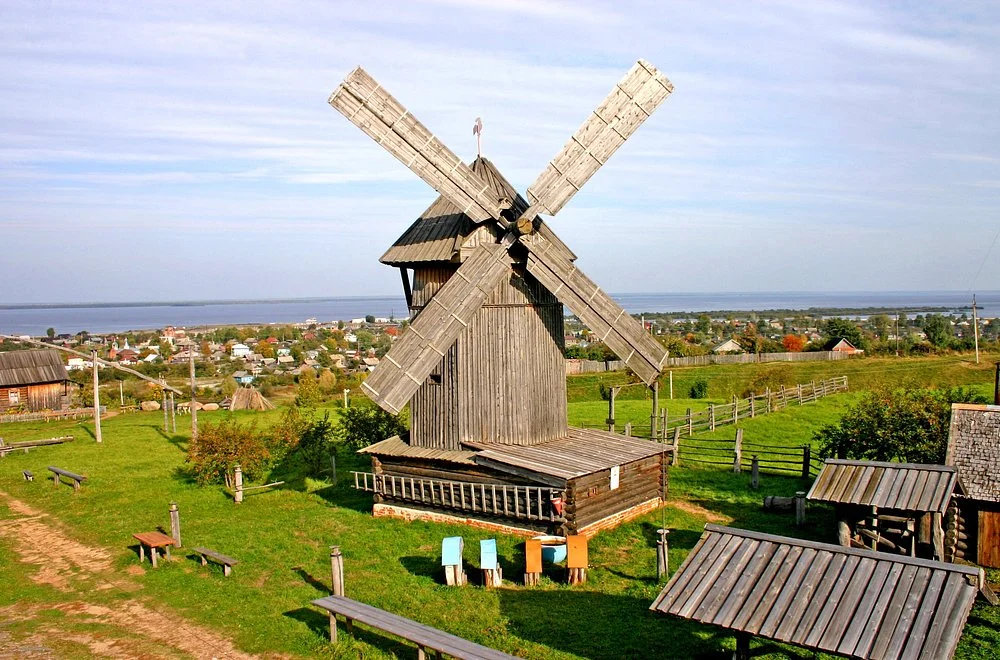
Photo source: tripadvisor.ru
If you want something unusual in Minsk itself, you can visit the “STRANA MINI” museum. This is an exhibition of miniatures of the main attractions of Belarus, from the castles of Nesvizh and Mir to the Minsk churches. Each model is made with incredible detail, and interactive elements (lighting, moving figures) make the inspection fascinating. The exhibition includes both miniatures of existing buildings and those recreated from historical photographs, descriptions, and documents.
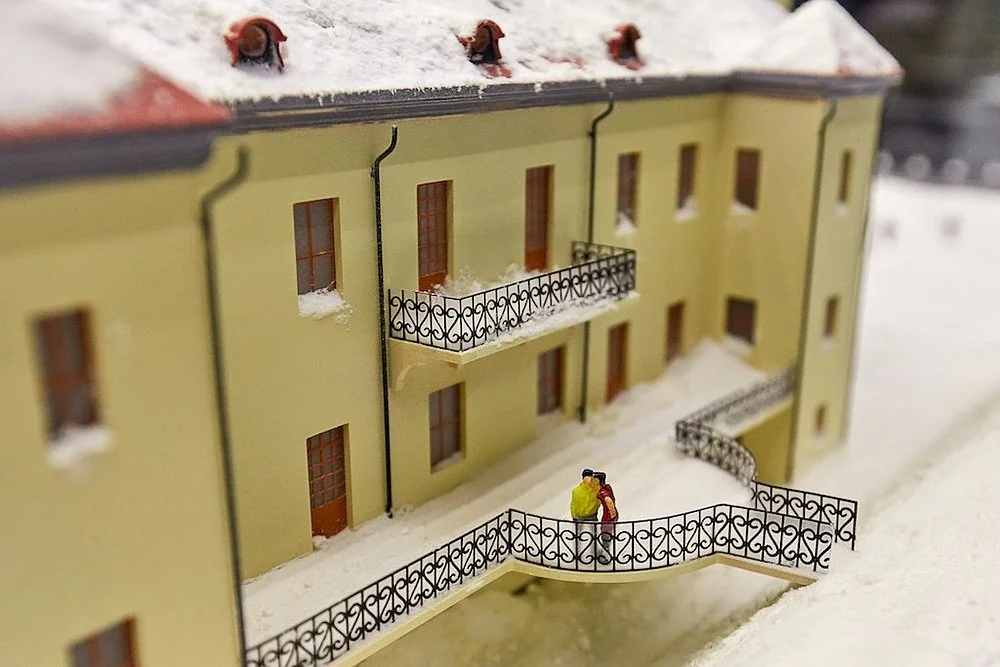
Photo source: tripadvisor.ru
If Gorky Park or Pobedy Park are already on your route, Loshitsa Park is another green pearl of Minsk. This 18th-century park is famous for the old Prushinsky estate, ponds, and picturesque alleys. Here you can walk among centuries-old oaks, ride a bike, or just enjoy the silence. Festivals are held in the summer, and in the fall, the park is immersed in golden colors. There is a cafe nearby with local dishes, but you can take food with you for a picnic.
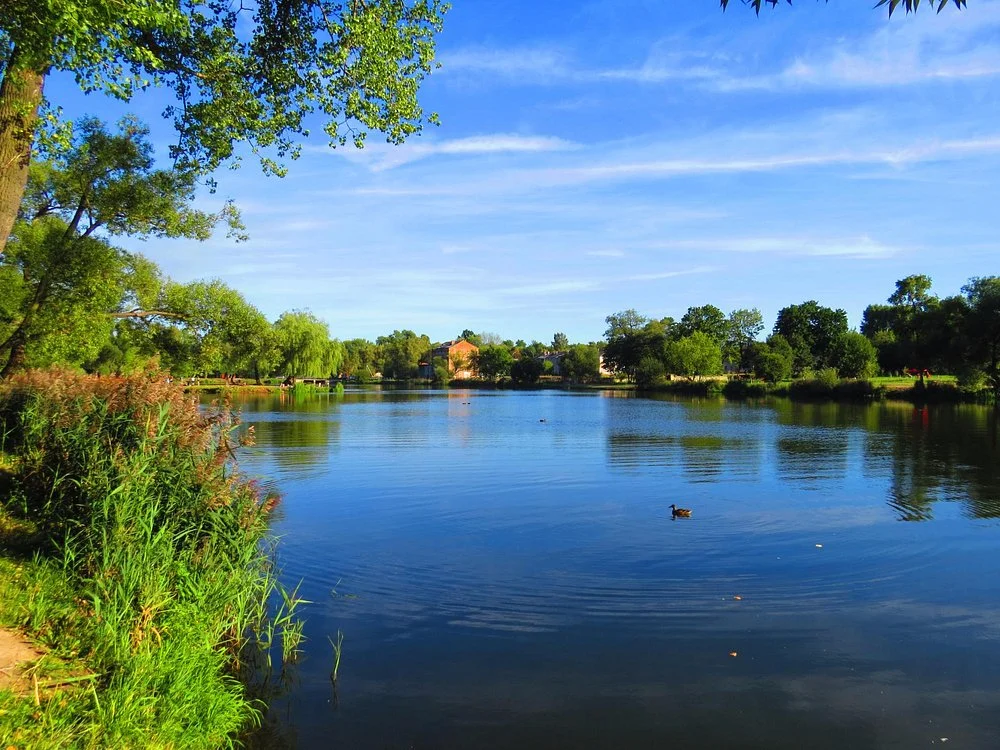
Photo source: tripadvisor.ru
Where to Eat in Minsk
While traveling around the capital of Belarus, you will most likely want to grab a bite to eat or try the local cuisine. If time is short, you can find many places for a quick bite in the center:
- “Lido” (Independence Avenue, 49/1, next to Yakub Kolas Square). It is a popular chain of self-service canteens. Here you can take draaniki, cutlets, salads, or borscht with pampushki. Portions are large and prices are democratic: from 10-25 BYN ($3.05-$7.64) for lunch. The chain is tourist-oriented, and all menus are translated into English, and the level of necessary communication is minimal.
- “Draniki (6 Zybitskaya St.). A small café specializing in draniki with different fillings — from sour cream to salmon. They also serve pancakes and soups. The cost is similar to “Lido”.
- Street kiosks. In the city, there are many sites with street food, most often they are found in parks. There they sell hot dogs, pancakes, shawarma, or fries. However, the stalls often require cash.
National cuisine can be tasted, for example, at these places:
- “Kamyanitsa” (18 Pervomayskaya Street, Upper Town). Atmospheric restaurant in historical style. Most often here you can get draniki with machanka (meat sauce), kolduny (dumplings with meat or mushrooms), or zhurek (sour soup with sausage). Average check: 25-50 BYN ($7.64-$15.27) per person.
- “Vasilki” (several addresses, for example, 16 Nezavisimosti Ave. or 25 Yanki. Kupala St.). A chain of restaurants with a modern look at Belarusian cuisine, there are even dishes for vegetarians, but with a local flavor. Average check per person — 30-50 BYN ($9.16-$15.27).
- “Kuhmister” (40 K. Marksa St.). Restaurant with an emphasis on gentry cuisine of the XVIII-XIX centuries. We recommend vertuta (roll with meat) or pork with sauerkraut. The interior in the style of an old manor adds color. The average check is comparable to the previous establishments.
Visa/Mastercard cards are accepted in restaurants and cafes, but cash currency (BYN) is required in street stalls and small snack bars. English menus are available in most restaurants and coffee shops in the center, but in kiosks and canteens, they will be mostly in Russian. Cafés and restaurants are open from 10:00-11:00 to 22:00-23:00, bars on Zybitskaya — until 2:00-4:00. Street kiosks are open until 20:00-21:00.
Let’s Sum It Up
Of course, in two days in Minsk, you can feel its unique character, but much remains outside the route. The cultural life of the city is in full swing in the galleries of the Upper City, where works by Belarusian artists are exhibited, and in the Cat Museum, dedicated to the fluffy symbols of coziness. The nightlife of Minsk is revealed on the same Zybitskaya, with many establishments on a variety of topics.
We also did not cover industrial tourism with excursions to the BelAZ, MTZ, and many other factories. Legendary trucks and tractors are created there. And this is a slightly different look at industry and the economy through its own tourist prism.
In any case, Minsk is just the beginning. It is worth immersing yourself in the wealth of Belarus for at least a month, and outside the capital you will find the Yelnya swamp massif in the Vitebsk region, the crystal Naroch lakes, monumental art and a monument to the fortitude of the Soviet people — the Brest Fortress. And this is only part of the beauty of the Belarusian land, which you can get to know yourself.
Author
I write informative articles about real estate, investments, job opportunities, taxes, etc.










